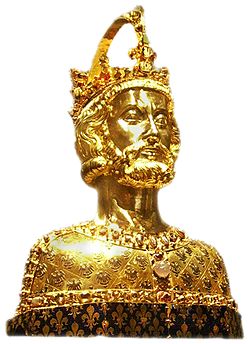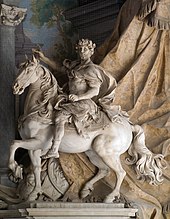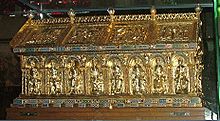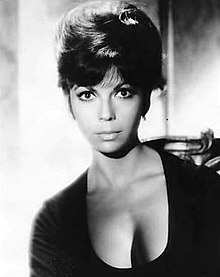One of the most famous and sensational singer of the 20th century is Frank Sinatra. Here are some interesting and entertaining tidbits about him.
1.) Frank Sinatra was born in Hoboken, New Jersey, USA on February 17, 1915.
2.) Sinatra was married 4 times - Nancy Barbato, Ava Gardner, Mia Farrow and Barbara Marx. Although Sinatra did not remain faithful to his wife, he was by many accounts a devoted father.
3.) His first wife is Nancy Barbato. They have 3 children – Nancy (1940), Frank Jr. (1944) and Tina (1948).
4.) Nancy, Sinatra’s eldest daughter, is a singer, actress and writer.
5.) Frank Jr. is a singer, conductor and songwriter and Tina is a producer and actress.
6.) His daughter Nancy, at age 54 posed for Playboy in the May 1995.
7.) A certain Julie Sinatra claims to be Sinatra's daughter through an unacknowledged affair that he had with a showgirl, Dorothy Bunocelli, in the 1940s. She was born Julie Ann Maria Lyma on February 10, 1943
8.) Julie Sinatra legally changed her last name to Sinatra in 2000 and was awarded $100,000 by the Sinatra estate in 2002.
9.) In 1963, at the age of 19, his son Frank Sinatra Jr. was kidnapped and released two days later after payment of a ransom.
10.) Sinatra’s first controversial extra-marital affair was with Marilyn Maxwell, an American actress and entertainer.
11.) Sinatra should have 4 children with his wife Nancy if the latter didn’t abort it when she became pregnant in 1946.
12.) Nancy and Frank were married in 1939 and they were divorced in 1951.
13.) Sinatra married Ava Gardner in 1951 and separated in 1953 and divorced in 1957. She had an abortion too. It could have been Sinatra’s 4th child.
14.) Sinatra married the actress, Mia Farrow on July 19, 1966. She was 21 and he was 50. They divorced in 1968.
15.) He married Barbara Marx in 1976 and remained his wife until his death.
Nancy Sandra Sinatra – Frank Sinatra’s daughter
16.) Sinatra was also romantically involved to the legendary singer Judy Garland in 1949.
He was also romantically involved to Lauren Bacall, wife of the late Humphrey Bogart.
17.) Sinatra was also engaged to the actress Juliet Prowse and have had a 10 year relationship with Angie Dickinson.
18.) Sinatra was an Italian American singer and motion-picture actor whose career lasted for many decades.
19.) He is one of the most famous American entertainers of his generation.
20.) His complete name is Francis Albert Sinatra.
21.) Sinatra was an only child and his parents wanted him to become an engineer.
22.) He preferred athletics to academics participated in a variety of sports, including boxing.
23.) At his teens, Sinatra worked for the Jersey Observer newspaper, often writing about school sporting events in which he was also a participant.
24.) In 1938, he signed his first professional contract as a singing waiter and master of ceremonies at a club in Englewood, New Jersey.
25.) Harry James, a trumpet player, after watching Sinatra perform, James recruited Sinatra to be the lead singer in his band, the Music Makers.
Frank Sinatra Jr.
26.) Sinatra’s music is influenced by American singers Bing Crosby and Billie Holiday.
27.) In the 1940s Sinatra embarked on a solo career and became the idol of so-called bobby-soxers, teenage girls who swooned over his crooning, soft-voiced singing.
28.) He had many close relationships throughout his life. He was married four times, and had many other notable relationships before, after and during these marriages.
29.) His popularity drew the attention of Hollywood, and Sinatra appeared in such film musicals as Anchors Aweigh (1945), Till the Clouds Roll By (1947), and On the Town (1949).
30.) As an actor, he won an Academy Award for his non-singing performance in From Here to Eternity (1953).
31.) He also starred in The Manchurian Candidate (1962) and The Detective (1968).
32.) His most popular songs in the 1950s were Swing Easy (1955), In the Wee Small Hours (1955), Songs for Swingin' Lovers (1956), Come Fly with Me (1958) and Frank Sinatra Sings for Only the Lonely (1958)
33.) Sinatra’s hits in the 1960s include Nice 'N' Easy (1960), and Strangers in the Night (1966).
34.) In the 1960s he also recorded with the big bands of American jazz musicians Count Basie and Duke Ellington.
35.) After a brief retirement from 1971 to 1973, Sinatra resumed his singing career, continuing to tour and appearing frequently in Las Vegas, Nevada.
Ava Gardner
36.) In 1993 he released the album Frank Sinatra Duets, on which many of his standard songs were engineered as duets with other famous singers. Contributors to the album included American singers Barbra Streisand and Aretha Franklin, Latin American recording star Julio Iglesias, and Bono, lead singer of the Irish rock group U2.
37.) The album sequel Duets II (1994), which won Sinatra a Grammy Award, includes collaborations with country-and-western star Willie Nelson, jazz singer Lena Horne, and pop singer and songwriter Neil Diamond.
38.) Many songs recorded by him, such as “All of Me” (1952), “Come Fly with Me” (1958), “All the Way” (1957), and “I've Got You Under My Skin” (1956), are still widely performed.
39.) Sinatra’s professional awards and accolades include 9 Grammy Awards, 3 Academy Awards, a Presidential Medal of Freedom (1985), and a Congressional Gold Medal (1997).
40.) Throughout his life, Sinatra had mood swings and bouts of depression.
41.) He was an ardent supporter of Democratic Party until the early 1970s. He switches as a Republican.
42.) Sinatra supported Ronald Reagan in the 1980 Presidential Elections and donated $4 million to Reagan's campaign.
43.) Frank Sinatra died on May 14, 1998 of heart attack as a complication of heart, kidney diseases and bladder cancer. He was 82 years old.
44.) Elton John stated that Sinatra, "was simply the best – no one else even comes close".
45.) The U.S. Postal Service issued a 42-cent postage stamp in honor of Sinatra on May 13, 2008.
46.) The U.S. Congress passed a resolution on May 20, 2008 designating May 13 as Frank Sinatra Day to honor his contribution to American culture.
47.) Frank Sinatra is also known as “Ol’ Blue Eyes” and “The Chairman of the Board”.
48.) His song "My Way" is often quoted as the most covered song in history.
49.) Sinatra left high school without graduating, having attended only 47 days before being expelled because of his rowdy conduct.
50.) He began singing professionally as a teenager in the 1930s, although he learned music by ear and never learned how to read music.
51.) Sinatra worked as a delivery boy at the Jersey Observer newspaper and as a riveter at the Tietjan and Lang shipyard.
52.) His mother, Dolly Sinatra, ran an illegal abortion business from her home and was arrested several times and convicted twice for this offense.
53. Antonino Martino Sinatra served with the Hoboken Fire Department as a Captain.
54.) He began singing for tips at the age of eight, standing on top of the bar at a local nightclub in Hoboken, New Jersey.
55.) Sinatra’s first commercial record is "From the Bottom of My Heart" which was released in July, 1939.
Mia Farrow
56.) Fewer than 8,000 copies of "From the Bottom of My Heart" were sold, making the record a very rare find that is sought after by record collectors worldwide.
57.) Sinatra did not serve in the military during World War II because he was a "neurotic" and "not acceptable material from a psychiatric standpoint".
58.) During the Second World War, active-duty servicemen and journalist William Manchester said of Sinatra, "I think Frank Sinatra was the most hated man of World War II, much more than Hitler", because Sinatra was back home making all of that money and being shown in photographs surrounded by beautiful women.
59.) Sinatra’s exemption in the World War II would resurface throughout his life and cause him grief when he had to defend himself.
60.) Sinatra was awarded the Presidential Medal of Freedom by President Ronald Reagan.
See also












 A showcase of bathroom designed by Bernadett Torok. Sophisticated tiling with cost estimation and quality renderings.
A showcase of bathroom designed by Bernadett Torok. Sophisticated tiling with cost estimation and quality renderings. Bathroom vanities in a European and contemporary style often incorporate natural stone, wood, metal and glass together for the perfect balance of ...
Bathroom vanities in a European and contemporary style often incorporate natural stone, wood, metal and glass together for the perfect balance of ... 2011 NKBA Design Competition - Best Bathroom design winner and National Kitchen and Bath Association member, Holly Rickert discusses her award ...
2011 NKBA Design Competition - Best Bathroom design winner and National Kitchen and Bath Association member, Holly Rickert discusses her award ...





 www.maheshpunjabi.com Interior Designer, Interior Designer Mumbai, Interior Designer India, Interior Designs, Bathroom Interiors | Get your ...
www.maheshpunjabi.com Interior Designer, Interior Designer Mumbai, Interior Designer India, Interior Designs, Bathroom Interiors | Get your ...




